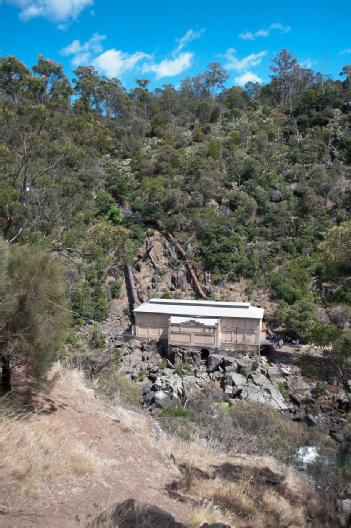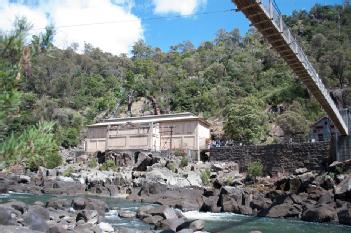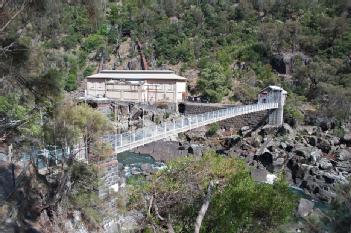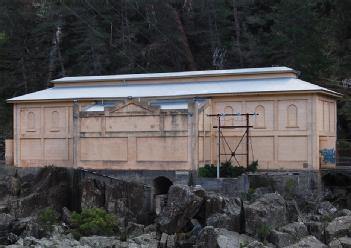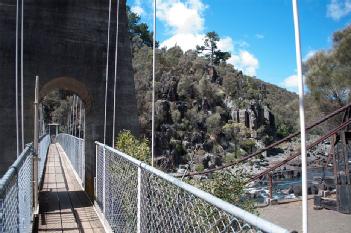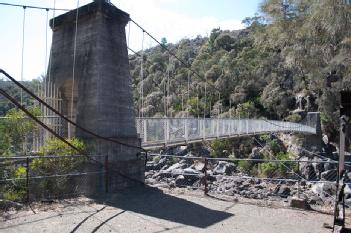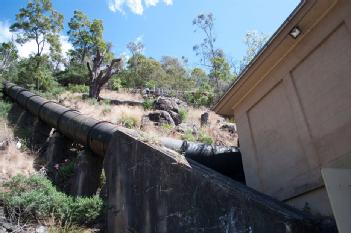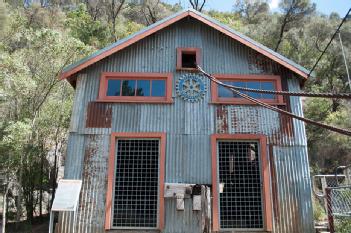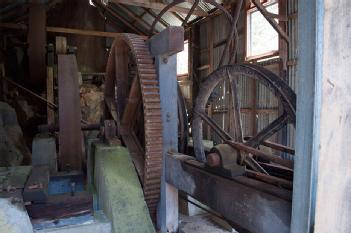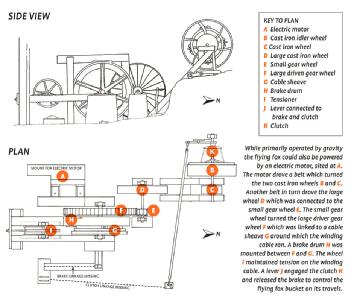
Duck Reach Power Station |
7250 Trevallyn, Australia (Tasmania) |
|
| Address |
|
| Floor area | unfortunately not known yet |
Electric motors/generators/pumps
- Bridges and Tunnels
- Mountain Railways & Cableways
|
Opening times
|
dayli: 9am - 5pm |
|
Status from 08/2019
|
We don't know the fees. |
| Contact | Unknown contact data for this museum - please help via contact form. |
| Homepage | duckreach.com.au |
| Location / Directions |
Duck Reach and the Power Station is located in a narrowing gorge on the South Esk River some 4.5 kms from its junction with the Tamar River in Launceston, Tasmania. Parking at the top on Corin St and start the walk down to Duck Reach |
| Description | From Wikipedia, the free encyclopedia: The penstock ran diagonally down the hill into the centre of the rear of the power station where it channeled in to successively smaller pipes and finally to eight Siemens turbines. Operational history Originally the installation had a capacity of 75 kW DC, provided by five 15 kW dynamos, and 360 kW AC, provided by three 120 kW alternators. The turbines were manufactured by Gilbert Gilkes and Co., whilst the dynamos and alternators were built by Siemens and Co.. All alternating-current (AC) supply was single-phase. By 1906 demand had risen and it became necessary to upgrade the plant. This was done by removing much of the original equipment and replacing it with four 445 hp Francis turbines manufactured by Kolben and Co. of Prague, each coupled to a single 300 kW three-phase alternator again built by Siemens and Co.. This raised the AC capacity of the station to 1.2 MW. The original DC equipment remained in use. Again by 1926, this had become inadequate, and to ease the problem a new 0.88-megawatt (1,180 hp) turbine coupled to an 800 kW alternator was added alongside the existing machinery. To drive this new turbine a timber flume and a masonry aqueduct was constructed, running from Deadmans Hollow around the bend in the South Esk River to the slope immediately behind the Power Station, where it was led into a new steel penstock running alongside the original one. The addition of this new turbine and alternator raised the capacity of the station to 2 megawatts (2,700 hp). In the photograph above, the left-hand penstock is the newer one. One of the original Siemens and Co. 15 kW DC dynamos, dating from 1895, is preserved and on display within the station. The power station was closed in 1955, following the construction of the Trevallyn Dam and power station. Duck Reach Museum In 1995 on the centenary of its first opening, the power station was made weatherproof, the suspension bridge restored and the building re-opened as a museum. The Flying Fox Known at the time as the ‘aerial tramway’ it was constructed in 1895 to transport people and building materials from this more accessible side of the Gorge to the site of the Power Station on the opposite bank. The transport buckets were suspended 46 metres above the river bed and were large enough to carry two to three passengers as they travelled the 107 metres across the Gorge. Utilising the 31 metre fall from the south side of the Gorge, the system functioned simply by allowing the weight of the material in the buckets to work with gravity. As full buckets rolled down from the south side, empty buckts were pulled up from the side to continue operation. The journey across the 107 metre span of the Gorge took around ten seconds. |
[dsp_museum_detail.cfm]
| Data Compliance | More Information |
